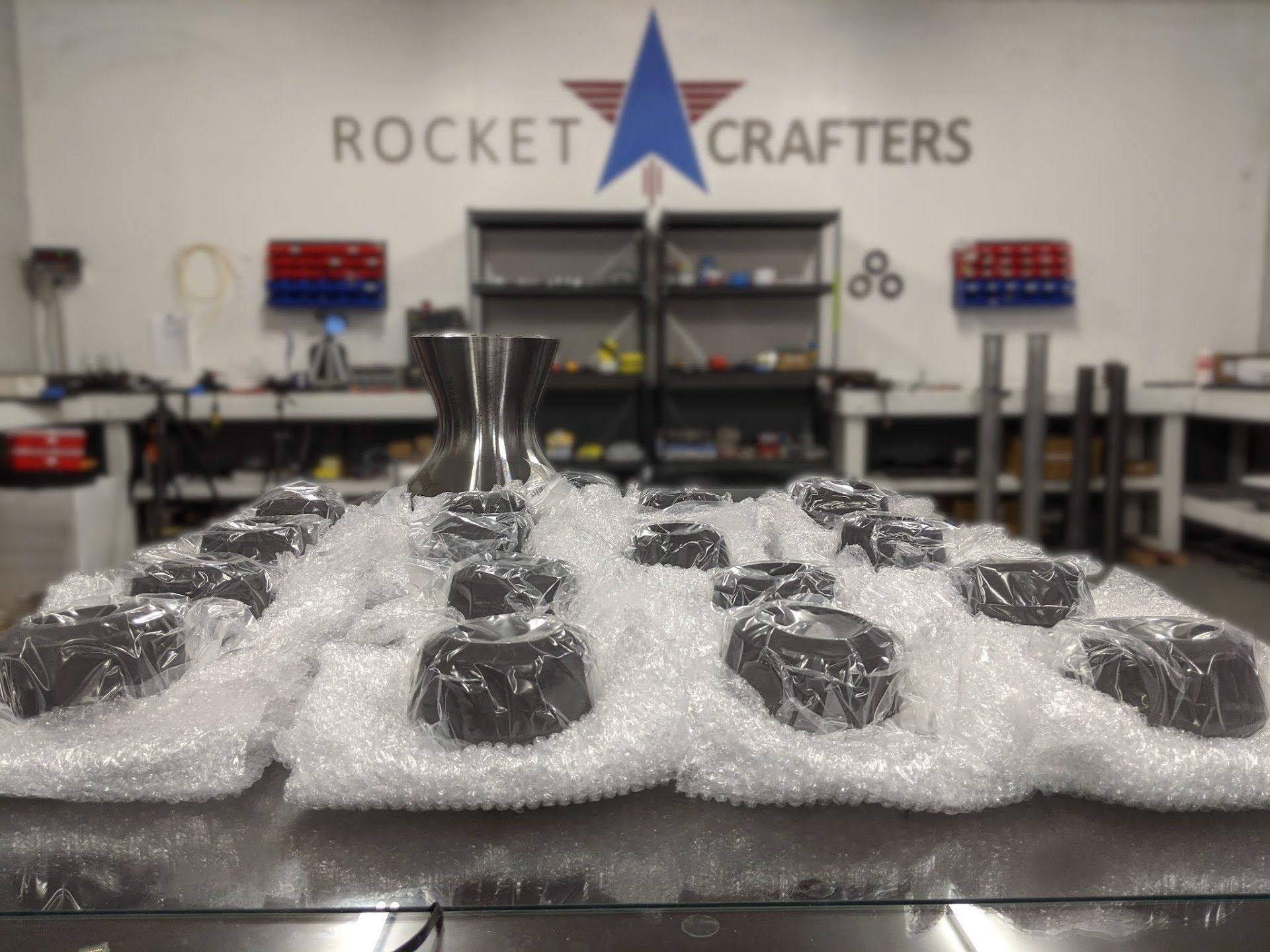U.S. space technology startup Rocket Crafters Inc. (RCI), has concluded testing of its Comet Series Hybrid 3D printed rocket engine.
Having completed 49 laboratory tests, the latest test firings were designed to be a large-scale proof of concept for Rocket Crafters’ STAR-3DTM hybrid rocket engines, ahead of a planned test flight later this year.
“We’re excited about the data we’ve seen and to fly a rocket soon,” said Rob Fabian, Rocket Crafters President. “The engine performance for the tests were on track with models.”

Rocket Crafting and additive manufacturing
The Florida-based aerospace company has been developing its hybrid technology with the aim of producing a more reliable and affordable alternative for launching payloads into orbit.
Rocket Crafters’ patented approach to engine design combines 3D printed solid rocket fuel grains and liquid propellants, in an attempt to harness the benefits of both approaches.
While solid propellants burn continuously until they run out, 3D printing allows the fuel to be printed in a specific pattern, in order to determine how the propellant burns. In addition, 3D printing improves the consistency and reliability of the solid propellant fuel and mitigates against issues of excessive vibrations created by conventional propellants. According to Rocket Crafters, the hybrid engines are cheaper, quicker, and safer to develop than their liquid propellant counterparts, and also have the ability to be throttled and restarted.
The company was granted a $542,600 research contract by the Defense Advanced Research Projects Agency (DARPA) to develop its 3D printed rocket fuel engine in July 2017. As part of the research agreement, Rocket Crafters was given permission to test a flight-capable rocket motor using a specially constructed test stand at Florida’s Space Coast, in order to assess the rocket’s throttle and emergency engine shutdown capabilities.

Testing the 3D printed rocket
The tests were conducted over the last three months at the company’s facility in Cocoa, Florida, around 20 miles south of Kennedy Space Center. The Comet Rocket had been tested with 250-500 pounds of thrust in the laboratory, but since February, the rockets used a full 5000-pound thrust engine, the largest version of the experimental engine yet.
Two out of the three tests were successful and closely matched the company’s performance models, but the third experienced an overpressure anomaly, resulting in damage to the test stand and engine.
Analysis concluded that there was an initial failure in an ancillary part of the engine that led to a larger over-pressurization inside the combustion chamber. The Rocket Crafters team maintains that there are no problems within the core STAR-3DTM engine design and that the tests could still be considered successful in terms of research and development.
“This is why we test,” said Fabian. “We find and fix problems in testing, so we don’t have them on the launch pad. We’re moving forward from here.”
Rocket Crafters is planning to go ahead with its inaugural test flight, powered by a smaller version of the STAR-3DTM hybrid rocket engine later this year. This will be followed by two larger test flights into orbit, and a commercial service to low earth orbit with the Intrepid small satellite launch vehicle, although the dates for these launches have not been set.

Additive manufacturing and space launches
An increasing number of companies are utilizing 3D printing technology to develop different types of rocket fuel for commercial use. Scientists from James Cook University (JCU) in Australia for example, have used 3D printed fuel grains to power a hybrid rocket motor. Using PLA with aluminum particles, 3D printed circular grains were manufactured with initial dimensions of 100mm in length, 20mm in diameter, and a 6 mm straight circular combustion port. Although they performed poorly during testing in August 2019, the researchers maintained that the fuel had potential.
Singaporean start-up Gilmour Space Technologies launched a self-made rocket from Australia in July 2016 that was powered by 3D printed fuel. The fuel consisting of two unnamed materials powered a 3.6m long rocket that was launched towards orbit from Queensland, Australia. The company went on to receive $3.7 million in Series A funding in May 2017 to continue the development of its launch vehicles, which use 3D printed rocket fuel.
The nominations for the 2020 3D Printing Industry Awards are now open. Who do you think should make the shortlists for this year’s show? Have your say now.
Subscribe to the 3D Printing Industry newsletter for the latest news in additive manufacturing. You can also stay connected by following us on Twitter and liking us on Facebook.
Looking for a career in additive manufacturing? Visit 3D Printing Jobs for a selection of roles in the industry.
Featured image shows Rocket Crafters testing its Comet rocket engines at the company’s facility in Cocoa, Florida. Photo via John Kraus, Rocket Crafters.



